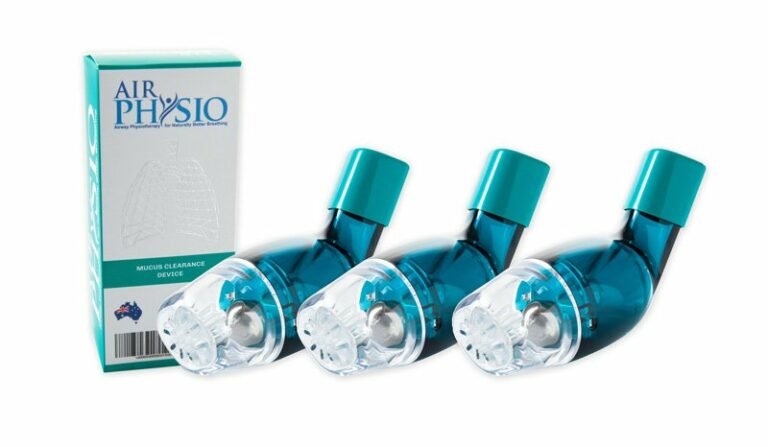Why Lung Health Matters on World MS Day – And Every Day
Each year on May 30, the world unites to recognise World MS Day – a powerful movement that brings together the global Multiple Sclerosis (MS)
A pneumothorax (pneumo- + thorax; plural pneumothoraces) is an abnormal collection of air or gas in the pleural space that causes an uncoupling of the lung from the chest wall.
Like pleural effusion (liquid build-up in that space), pneumothorax may interfere with normal breathing. It is often called collapsed lung, although that term may also refer to atelectasis.
Pneumothorax can sometimes occur when air or fluids escape from the lungs, sometimes due to a perforated lung or a stabbing wound to the chest. The air or fluid then fills the space outside of the lungs, between the lung and chest wall. This build-up of air or fluid puts pressure on the outside of the lungs, so that the lungs cannot expand as much as when you normally do take a breath.
Collapsed lung or pneumothorax can be caused by an injury to the lung, including gunshot or knife wounds to the chest, rib fracture, or certain medical procedures. In some cases, a collapsed lung is caused by air blisters (blebs) that break open, sending air and/or fluids like blood into the space around the lungs. This can result from air pressure changes such as when scuba diving or travelling to a high altitude.
The pressure and pain may keep you from wanting to take deep breaths. As a result, part of your lungs may collapse or not inflate correctly.
A small pneumothorax may go away on its own. You may only need oxygen treatment and rest. The health care provider may use a needle to pull the extra air or fluid out from around the lung so it can expand more fully. A large pneumothorax may require a chest tube to be placed between the ribs into the space around the lungs to help drain the air and/or fluid, allowing the lung to re-expand properly. Depending on the severity, the chest tube may be left in place for several days to allow for any fluid or air to escape, rather than building up over time. Some patients with a collapsed lung need extra oxygen.
Lung surgery may be needed to treat collapsed lung or to prevent future episodes. The area where the leak occurred may be repaired. Sometimes, a special chemical is placed into the area of the collapsed lung. This chemical causes a scar to form. This procedure is called pleurodesis.
If the case of pneumothorax, because the condition is usually due to damaged lung tissue, any vibration of the lungs has the potential to create further injury, causing more air or fluid to escape into the cavity between the lung and chest wall.
Consult with your doctor, but once the pneumothorax has been treated and has a chest tube installed, you may be able to use the AirPhysio device then.
For more information about pneumothorax, please refer to the following web pages and articles:
Pneumothorax
Collapsed lung (pneumothorax)
Primary spontaneous pneumothorax
Each year on May 30, the world unites to recognise World MS Day – a powerful movement that brings together the global Multiple Sclerosis (MS)
Asthma is more common than many people realise — affecting over 262 million individuals around the world. Yet despite how many lives it touches, asthma
In the pursuit of optimal respiratory health, understanding and implementing techniques like Chest Percussion can be a game-changer. This method, designed to enhance lung function
AirPhysio may be able to help by assisting with
✅Clearing the mucus clogging airways
✅Helps Promote Optimal Lung Capacity
✅Helps Promote Optimal Lung Hygiene
✅Helps treat Respiratory Conditions
✅May Reduce the chance of developing lung infections
✅Recommended by doctors, physical Therapists & Pulmonologists
✅Helps Make Breathing Easier
✅Sold in 106 countries globally


Do you suffer from Dry or Persistent Cough, Breathlessness, Respiratory or Severe Respiratory Conditions, or Shortness of Breath as you Get Older?

THIS PRODUCT MAY NOT BE RIGHT FOR YOU. READ THE WARNINGS BEFORE PURCHASE (Contraindications of Untreated pneumothorax; Tuberculosis; Oesophageal surgery; Right-sided heart failure; Middle ear pathology, such as ruptured tympanic membrane)
FOLLOW THE DIRECTIONS FOR USE
IF SYMPTOMS PERSIST, TALK TO YOUR HEALTH PROFESSIONAL

Gallery
AirPhysio is an Oscillating Positive Expiratory Pressure (OPEP) device that is used for mucus clearance and lung expansion to help in the treatment of respiratory conditions. The use of the AirPhysio device helps to facilitate secretion mobilization and maximize lung volume for cleaner healthier lungs.
© AirPhysio 2022 – All Rights Reserved
| Cookie | Duration | Description |
|---|---|---|
| cookielawinfo-checkbox-analytics | 11 months | This cookie is set by GDPR Cookie Consent plugin. The cookie is used to store the user consent for the cookies in the category "Analytics". |
| cookielawinfo-checkbox-functional | 11 months | The cookie is set by GDPR cookie consent to record the user consent for the cookies in the category "Functional". |
| cookielawinfo-checkbox-necessary | 11 months | This cookie is set by GDPR Cookie Consent plugin. The cookies is used to store the user consent for the cookies in the category "Necessary". |
| cookielawinfo-checkbox-others | 11 months | This cookie is set by GDPR Cookie Consent plugin. The cookie is used to store the user consent for the cookies in the category "Other. |
| cookielawinfo-checkbox-performance | 11 months | This cookie is set by GDPR Cookie Consent plugin. The cookie is used to store the user consent for the cookies in the category "Performance". |
| viewed_cookie_policy | 11 months | The cookie is set by the GDPR Cookie Consent plugin and is used to store whether or not user has consented to the use of cookies. It does not store any personal data. |